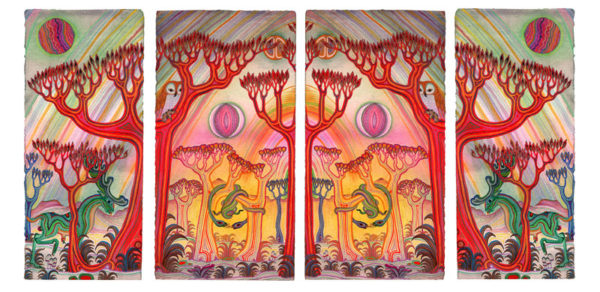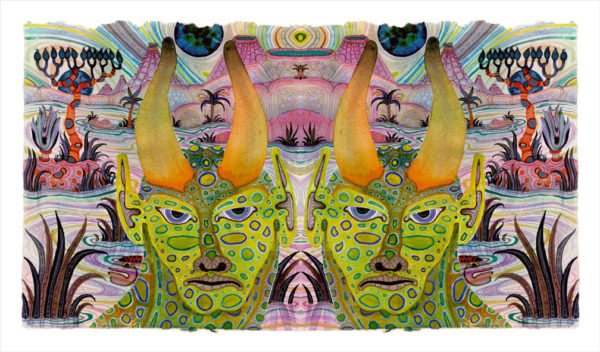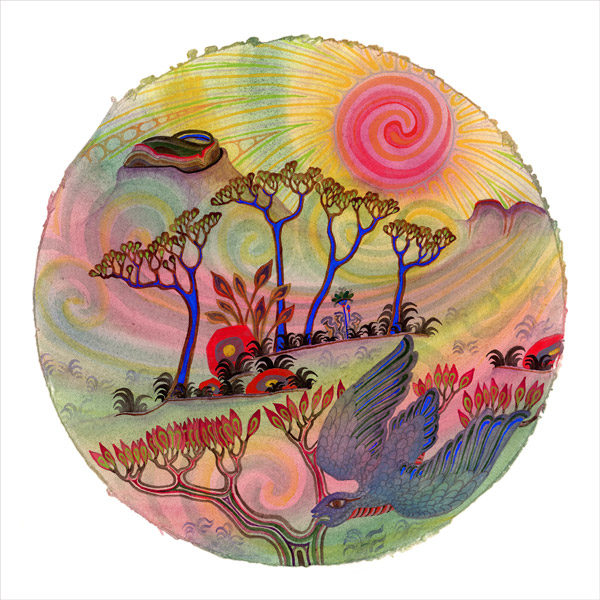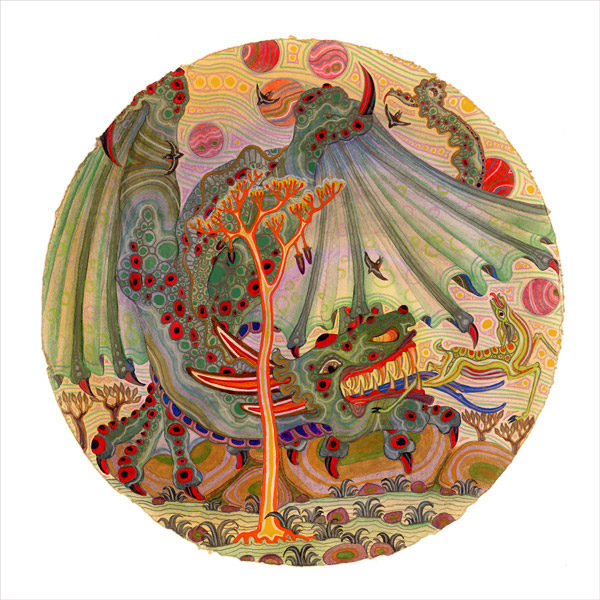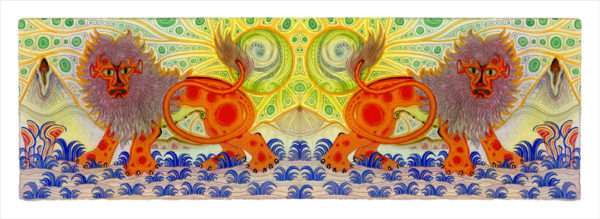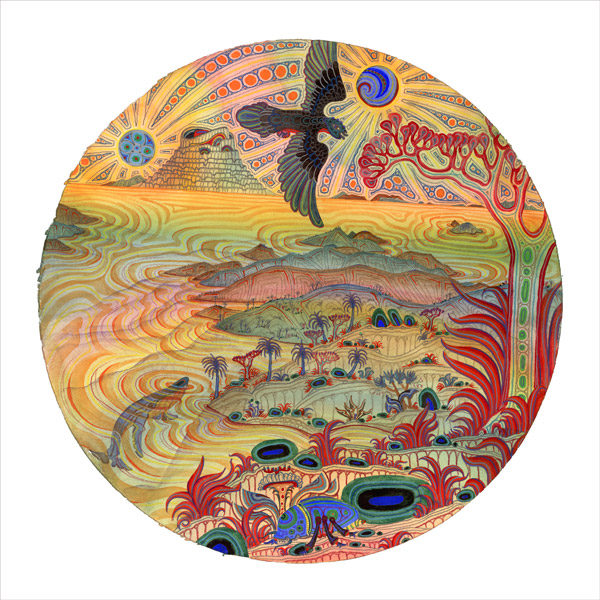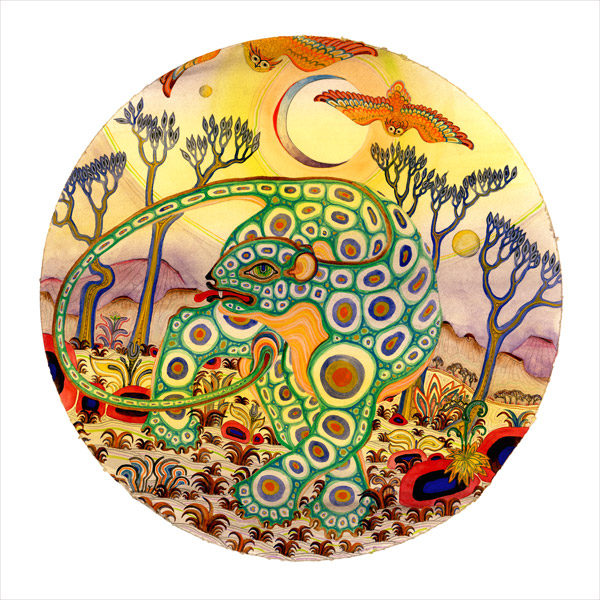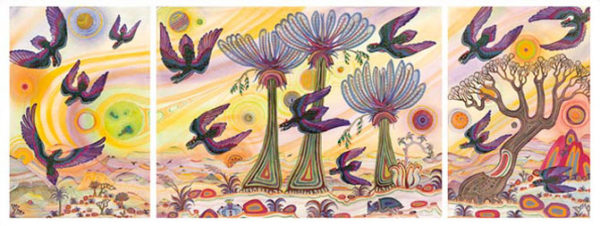Born: 1936 Nairobi, Kenya
Lives and works in El Salvador
Jesse Allen has been a highly visible staple of the Bay Area art community for over forty years and continues to expand the breadth of his work. Jesse’s richly detailed techniques create a visual maze to follow through the entire work, weaving a spiritual portrait of a place. Allen’s personal mythologies denote symbolism to each individual plant, creature, and earth form in his pieces, creating complex visual narratives.
Allen takes most of his imagery from the landscape of Kenya, where he was born and lived until his late teens. He received a degree in modern languages from St. Edmund Hall, Oxford, England. Allen cites the two years following his graduation, spent living in Milan, as fundamental to his development as a painter. An entirely self-taught artist, Allen moved to the United States to teach, and eventually left his post as a language professor at Stanford University to pursue painting full-time.
VA Kolve statement about Jesse Allen’s work.
Professor Kolve is an Honorary Fellow at Oxford University and a Distinguished Professor Emeritus at UCLA.
Jesse Allen is a painter of uncommon originality and power. His forebears were early settlers in Africa- immigrants to the Cape in 1820, and then pioneers in Natal. His childhood and adolescence were spent near the Rift Valley of Kenya and the wilderness, loneliness, and innocence of that landscape and its creatures- birds, animals, trees- have been preserved and metamorphosed into new worlds of the painter’s imagination, an inner country for the mind which these paintings, one at a time, delineate with absolute sureness and authenticity. They are not paintings of Africa: the animals are imaginary, as fantastic as any of the creatures of a medieval bestiary, and possessed of an extravagant beauty. Giraffes with necks like tall trees laden with fruit share landscape with fat, waddling sea-birds, squat, jewel-like turtles, sinuous snakes, polychrome monkeys, and beings at some disturbing middle distance between animals and men. There are small creatures everywhere-an infinite fecundity of life is here being celebrated, hard and clear, without sentimentality. Trees bear black fruit beneath blue suns, rocks and moons are cut open like agate to reveal an inner geometry of beauty. Animals stare directly at the beholder, startled but unblinking, declaring kinship: often they are locked violently together in an ambiguous act of death or love, with only fountains of blood erupting like flowers to suggest the final issue. There is a beauty in this world, and tranquility-as if Eden were recreated as a place-but it is a peculiar African kind of innocence that can include death and terror, staged in a universe whose sky, hung with multiples suns like the shields of Masai warriors, looks down impassively on what happens below. This artist works almost entirely in closed patterns: even his wildest skies, when they open beyond the frame of a picture, open with lines that imply their own ultimate union. His version of violence is curiously harmonious- it is never a singular, aberrant event- for its rhythms are reflected in the trees, rocks, the flowers, the skies; and those same rhythms control the pictures that concern an ideal serenity, and give them a fine masculine strength. The violence, the eroticism, the stillness, all are one-a unitive vision (in something of the mystic’s sense of that term) of the forces that lie beneath nature and are its truth. His art is closer to impersonation than to imitation- it is everywhere anthropomorphic-for it proceeds as do primitive dancers in ritual animal dances, incorporating themselves into the objects of their fear or desire.
Prints and watercolors by Jesse Allen are available. The prints were created by the artist using scans of his watercolor paintings and in some ‘mirroring’ them to create new images. All have embellishment by the artist and are signed by the artist. A pocket size color catalogue is available of the entire series. It includes text by the artist.
